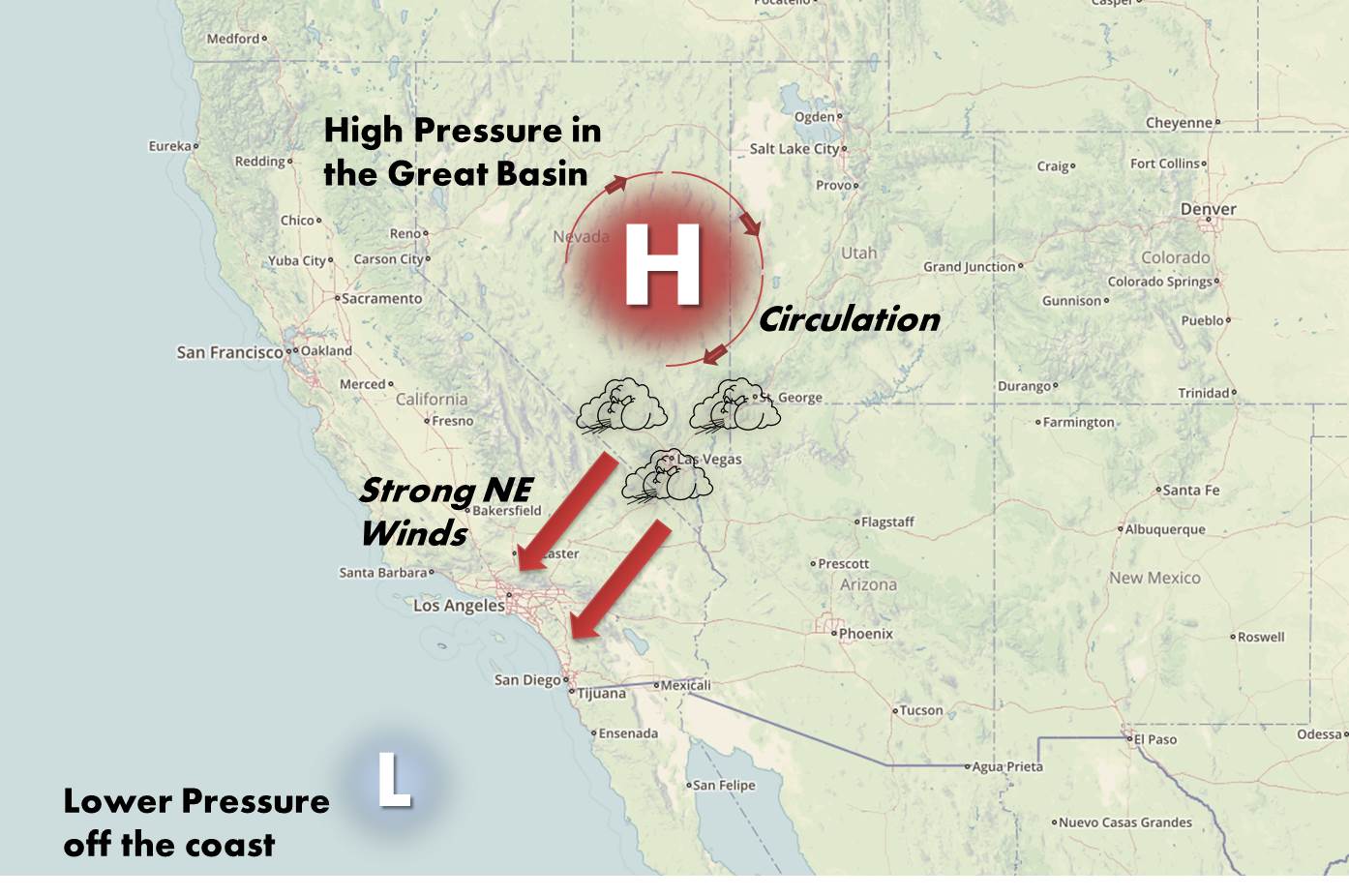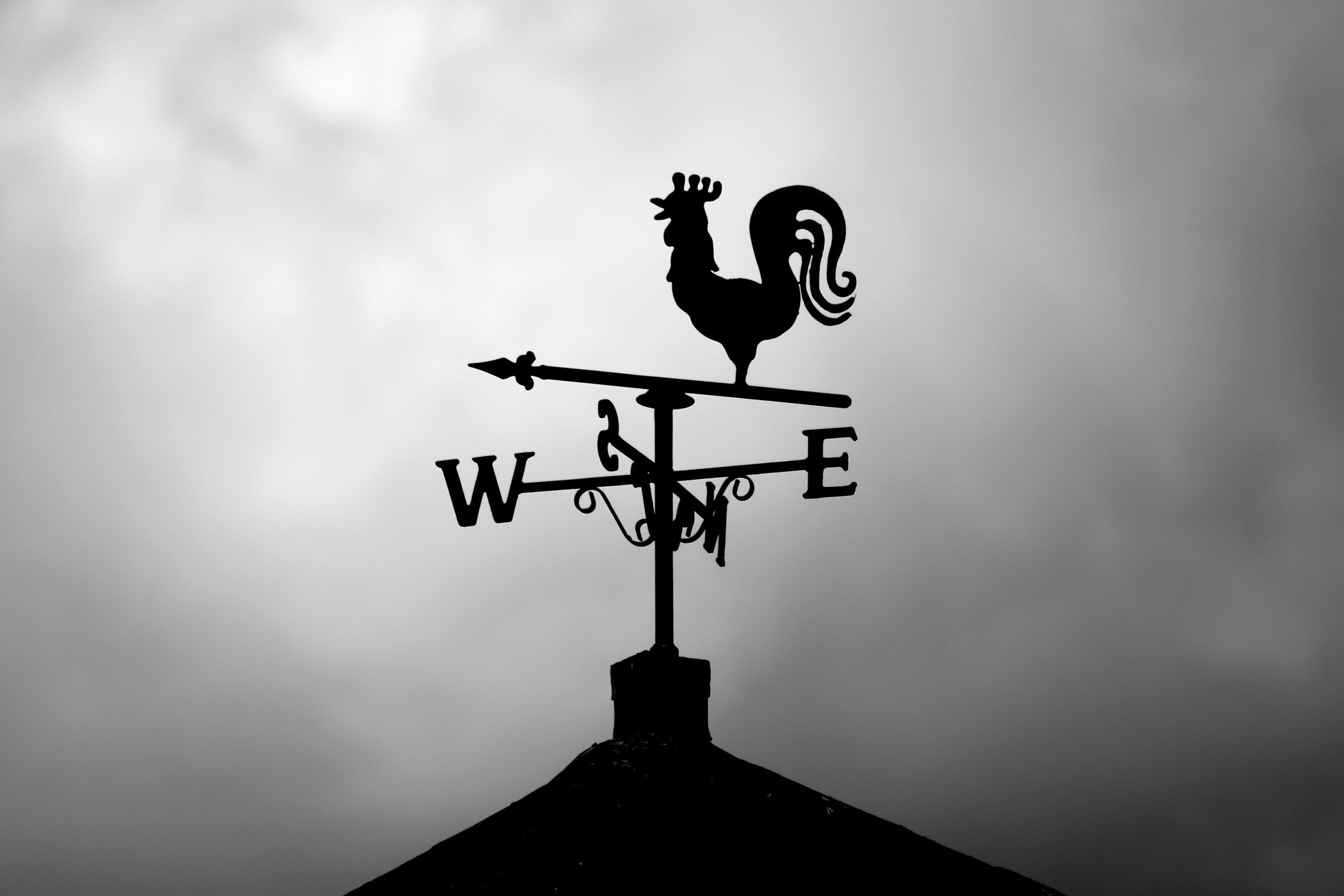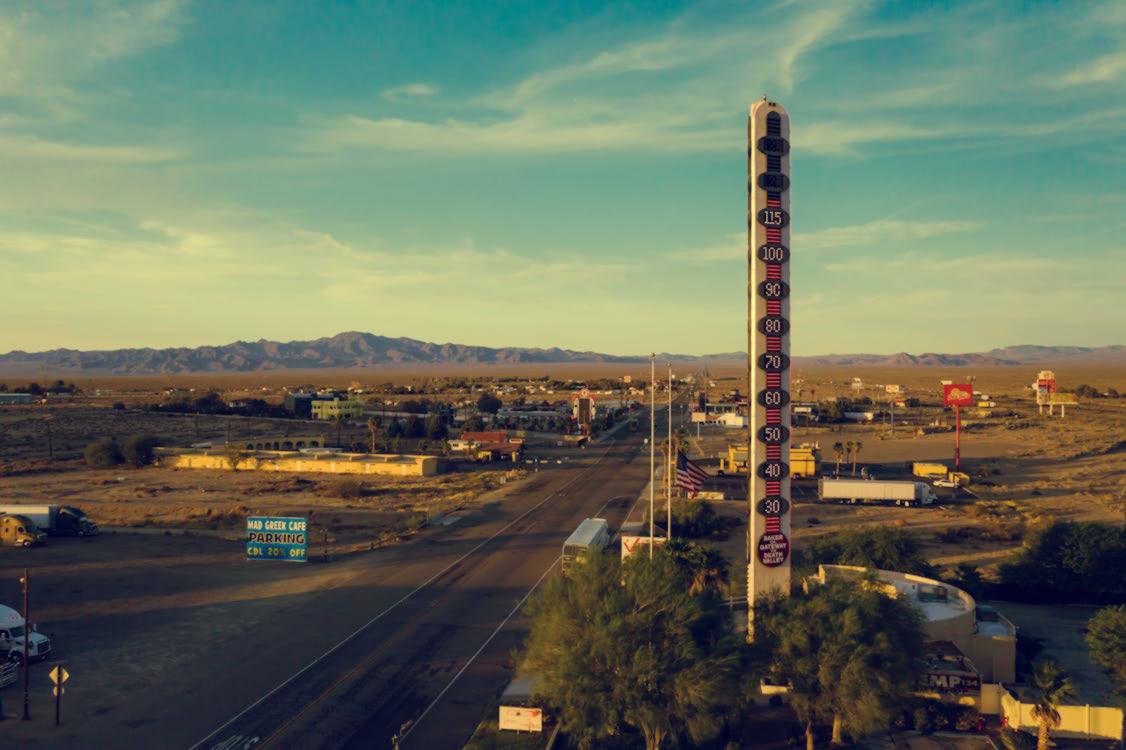Fall Means Santa Ana Winds
Annually, the onset of the fall and winter seasons brings the highest chance for Southern California’s famed Santa Ana winds. Historically, the worst fires in Southern California in terms of speed of growth and destruction are linked to these hot, dry wind events. The last two years, a strong and persistent Santa Ana event was a major player in the spread of both 2017’s Thomas fire in Ventura and Santa Barbara and last year’s Woolsey Fire in Malibu.
What Are Santa Ana Winds?
Typically Santa Ana air mass conditions are brought on by high pressure inland and lower pressure off the Pacific Coast which brings very hot and dry weather along with strong, down-slope winds. Santa Ana winds typically happen between September and May, in the winter months. We think this UCLA FAQ outlines Santa Anas the best. In the past, the critical fire weather conditions that accompany Santa Ana winds turn the typically dry chaparral of Southern California into explosive fuel. Some of the country’s costliest fires in history have taken place in these conditions.

Santa Ana Winds derive from High Pressure in the Great Basin
The Outlook This Fall
There are strong indications that the current streak of hotter and drier than normal conditions along the West Coast will continue through November. This may afford some areas that have seen little fire activity thus far in 2019, such as California, to see an increase large fire activity. Live fuels have been acting as a restraint to fire growth in these areas during the past few months, but the allotment of time these fuels have delayed the onset of large fires may be ending later this month. Therefore, large fire potential is expected to remain above normal along much of the West Coast into October due rapidly drying live fuels and warmer, drier weather. As the fall progresses, fire activity should relent over the Pacific Northwest and eventually Northern California during October. In November, West Coast resource demand should decrease from north to south, with South Ops likely seeing the bulk of the activity by Thanksgiving. Southern California will likely be the last area to see fire activity conclude in 2019 as offshore winds and dry fuels may keep fire activity going south of Pt. Conception into December.
This blog was originally posted on August 29th, 2018. It has been updated by RedZone September 25th, 2019.
![]()





4 Comments